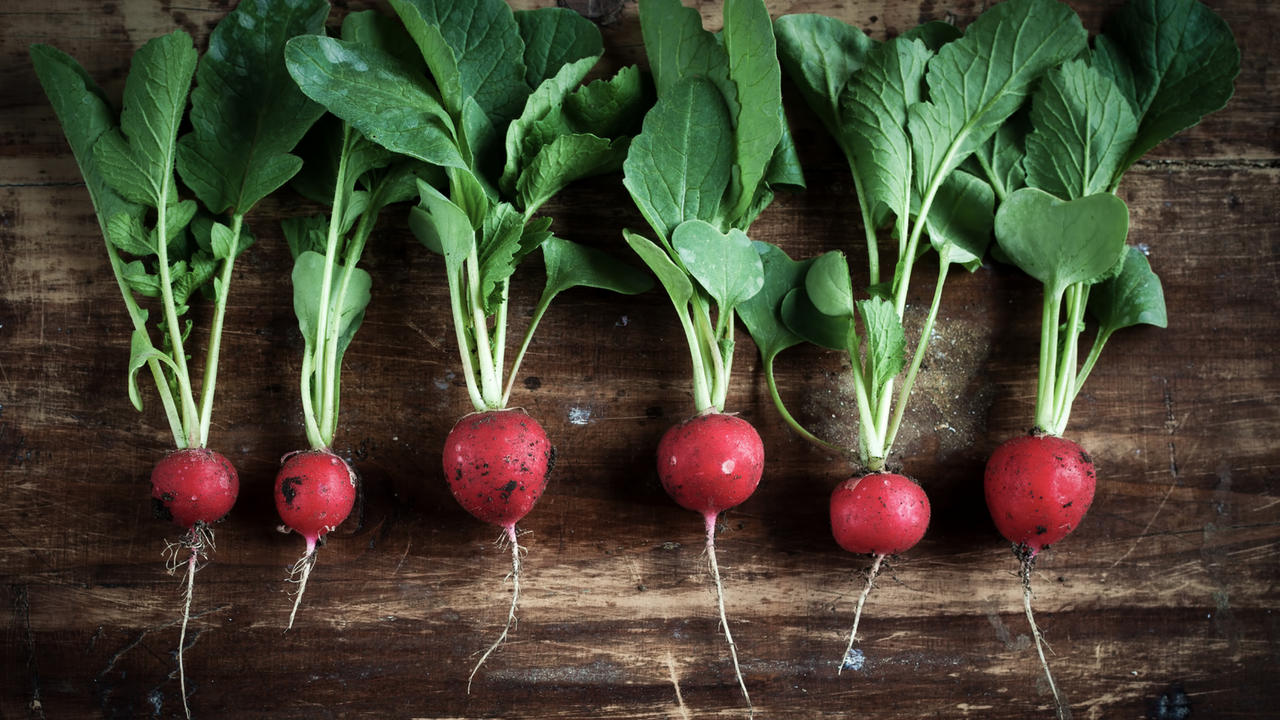Radish | powerful taste for powerful detoxification

I hated radishes until I discovered the local ones I could buy at my Farmer's Market. It seems that many radishes are only as good as the farmer who grows them. Commercially grown radishes can have a musty or woody flavour in the centre, yet the organic beauties I had were as sweet, crunchy and juicy as a crisp apple. Do yourself a favour and check out your local Farmer's Market to see if you can find an organic farmer that specializes in growing these powerful detoxifiers.
Have you come across black radishes? While at the market, I picked up some black radishes... because they’re even healthier. If you give them a try, keep in mind that they pack a punch similar to horseradish! So, it’s a good idea to use them in smaller amounts to help keep your meal's flavours balanced.

5 reasons to fall in love with Radishes
1. A radish’s red colour comes from the red plant pigment, anthocyanin.
This pigment gives these veggies a pretty colour, and also acts as a powerful antioxidant in your body, preventing cardiovascular disease by protecting your cells from damage.1
2. Radishes are part of the cruciferous family which provides a unique molecule called, indol-3-carbinol (I3C).
I3C reduces inflammatory intermediates in your blood. These intermediates are what signal increased blood flow to an injured area, causing inflammatory symptoms.2
3. Radishes are an excellent source of potassium.
Potassium supports proper fluid balance in your body by acting as a diuretic, in opposition to sodium. Symptoms of a sodium/potassium imbalance include swollen ankles or fingers, extreme thirst and irregular heartbeat. A long-term fluid imbalance like this can contribute to high blood pressure.
4. Radishes contain a special compound, known as RsPHGPx, that acts as an antioxidant for Phase II liver detoxification pathways.
This detox pathway disarms harmful chemicals such as pain relievers, nicotine, insecticides and other cancer-causing molecules.3
5. It turns out that black radishes do the best job of assisting your liver with its job of detoxification.
In The Way of Ayurvedic Herbs, Karta Purkh Sing Khalsa and Michael Tierra explain the traditional universal use of radishes to stimulate bile synthesis in the liver. Bile carries toxins into the gallbladder, then on into the small intestine so they can be excreted.
- David R. Bell, Kristen Gochenaur: “Direct vasoactive and vasoprotective properties of anthocyanin-rich extracts.” Journal of Applied Physiology Published 1 April 2006 Vol. 100 no. 4, 1164-1170 DOI: 10.1152/japplphysiol.00626.2005
- Jo-Ting Tsai, Hui-Ching Liu and Yue-Hwa Chen,*: “Suppression of Inflammatory Mediators by Cruciferous Vegetable-Derived Indole-3-Carbinol and Phenylethyl Isothiocyanate in Lipopolysaccharide-Activated Macrophages.” Mediators Inflamm. 2010; 2010: 293642. Published online 2010 Apr 13. doi: 10.1155/2010/293642 PMCID: PMC2855117
- Tian Li, Guan-Lan Liu, Ming-Xing Duan & Jin-Yuan Liu : “Radish phospholipid hydroperoxide glutathione peroxidase provides protection against hydroperoxide-mediated injury in mouse 3T3 fibroblasts.” BMB reports , 16 April 2009
- Kurta Purkh Singh Khalsa (Author), Michael Tierra (Author): “Way of Ayurvedic Herbs: The Most Complete Guide to Natural Healing and Health with Traditional Ayurvedic Herbalism.” Lotus Press; 1 edition (July 21 2010) ASIN: B003WQB2TW

